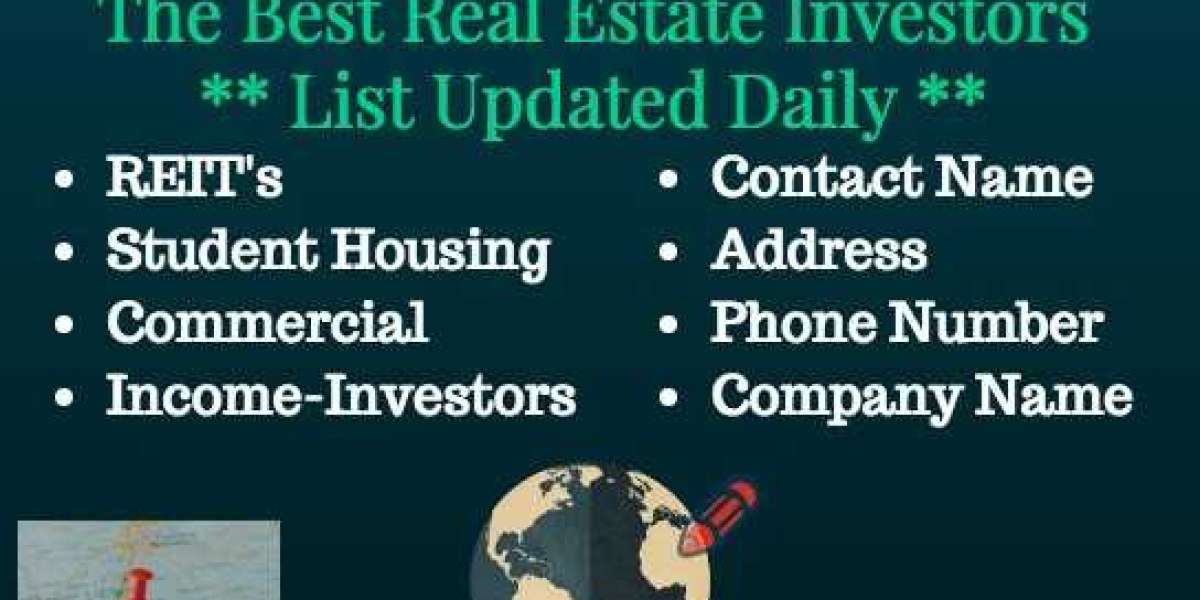It’s more than a contact list. Done right, it’s your personal capital network. A carefully built real estate investor list becomes your warm audience—people who trust your expertise, understand the value of real estate, and are ready to act when the right opportunity shows up.
In this guide, we’re breaking down how to build a high-quality list of real estate investors, why it matters more than ever, and how to keep that list engaged and ready to invest—without turning into a spam machine.
What Is a Real Estate Investor List?
Let’s start simple. A real estate investor list is a collection of contacts who are interested in putting their money into real estate opportunities. These might include:
Passive investors looking for steady returns
Active investors seeking joint ventures
Accredited investors wanting access to exclusive deals
Private lenders with capital ready to deploy
Some might already know you. Others may have just discovered your business through a blog post, webinar, or referral. But they all have something in common—they’re curious about real estate and are open to learning more, or investing when the time is right.
Why Your Real Estate Investor List Is a Business Asset
In real estate, finding a great deal is only half the equation. The other half is having the capital to act fast. That’s where your investor list becomes mission-critical.
Here’s why it matters:
1. Speed and Confidence
When you’ve got a list of engaged investors, you don’t hesitate when opportunity knocks. You can make stronger offers, close faster, and move with confidence.
2. Freedom From Brokers or Platforms
You don’t have to rely on hard money lenders, capital-raising platforms, or brokers to fund every project. You’ve got your own network.
3. Better Deal Flow
Once investors know you’re legit and you follow through, they start referring others. Suddenly, your list grows without paid ads or cold outreach.
4. Trust-Based Relationships
An investor list isn’t about collecting emails. It’s about building real connections. Over time, those relationships become repeat investors and loyal partners.
How to Build a Real Estate Investor List From Scratch
You don’t need a massive budget or a huge social following to start building your list. You just need to take consistent action and lead with value.
1. Start With Your Warm Network
Reach out to friends, colleagues, former coworkers, or anyone you’ve shared your goals with. You’ll be surprised how many people are open to passive investing—they just haven’t been asked.
Use a simple message like:
“Hey [Name], I’ve been working on some real estate projects and I’m building a list of people who want early access to future opportunities. Want to be on the list?”
No pressure. Just a conversation starter.
2. Create a Lead Capture Page
You don’t need a fancy website to get started. A clean, clear landing page is enough. Explain:
Who you are
What kind of deals you do
What subscribers can expect (deal alerts, updates, insights)
Then ask for their name, email, and a few quick questions to segment them (e.g., “Are you an accredited investor?” or “What’s your typical investment range?”).
3. Offer a Valuable Freebie
To grow your list beyond your warm network, offer a lead magnet—a short guide, checklist, or video that solves a problem for investors.
Examples:
“The Beginner’s Guide to Passive Real Estate Investing”
“How to Analyze a Real Estate Syndication in 10 Minutes”
“5 Red Flags to Watch for in Real Estate Deals”
Provide real value. That’s what earns you trust and builds your credibility from day one.
4. Leverage Social Media and Content
Share your journey. Post about deals you're analyzing, lessons you've learned, or industry trends you're watching. Then direct people to your opt-in page with a clear call to action like:
“If you’d like to be on my investor list for future opportunities, you can sign up here.”
Consistency wins. You’re building a brand, not just a list.
Nurturing Your Investor List: From Cold to Committed
Once people join your list, the goal is simple: keep them engaged, informed, and interested—even if you don’t have a deal to pitch right now.
1. Send Monthly Investor Updates
Even if you’re not actively raising funds, send regular emails. Share:
Market trends or insights
Case studies from previous deals
Behind-the-scenes updates on what you’re working on
Tips on due diligence or risk management
The goal? Stay top of mind, build authority, and remind them you’re active in the space.
2. Use Simple Segmentation
Not every investor is the same. Some want short-term flips. Others are long-game cash flow people. Some prefer debt, others equity.
Segment your list by interest or investment type so that when a deal comes up, you’re only emailing the folks who are actually a good fit.
3. Personalize When Possible
Automated emails are efficient, but personal emails still stand out. If someone’s opened your emails consistently or clicked your links, follow up with a one-on-one message.
Something like:
“Hey Sarah, I saw you checked out our last deal summary. Let me know if you’d like to hop on a quick call or see what we’re working on next.”
You’d be amazed at how effective this small touch can be.
When You’re Ready to Raise Capital
You’ve got a deal. You need capital. Now what?
1. Create a One-Page Deal Summary
Don’t overwhelm people with a full pitch deck upfront. Start with a simple overview:
Property location and type
Projected returns
Timeline
Minimum investment
Contact info or next step
Make it skimmable. Make it clear.
2. Follow Up With a Detailed Offer
Once investors express interest, share the full deck, schedule a call, or invite them to a private webinar. Answer questions. Be transparent. Make next steps easy.
And remember: this isn’t a one-time transaction—it’s the start of a relationship.
Avoid These Common Mistakes
Building and using an investor list is powerful—but there are a few traps to avoid:
❌ Pitching Too Soon
Don’t send a deal to someone the moment they opt in. Warm them up first with value.
❌ Over-emailing With No Value
If every email is “Hey, I need money,” you’ll burn your list. Focus on education, insights, and trust.
❌ Not Updating or Cleaning Your List
People change emails, lose interest, or stop opening. Check in regularly, re-engage cold leads, and don’t be afraid to remove dead contacts.
Final Thoughts: Build the List Before You Need It
Your real estate investor list isn’t just a tool—it’s the engine behind your ability to move fast, close strong, and scale sustainably.
And like any relationship, it grows over time with attention, transparency, and consistency.
So don’t wait until you need funding to start building your list. Start now. Stay human. Focus on real connections. And when the right deal comes along, you’ll already have the people in place to make it happen.

